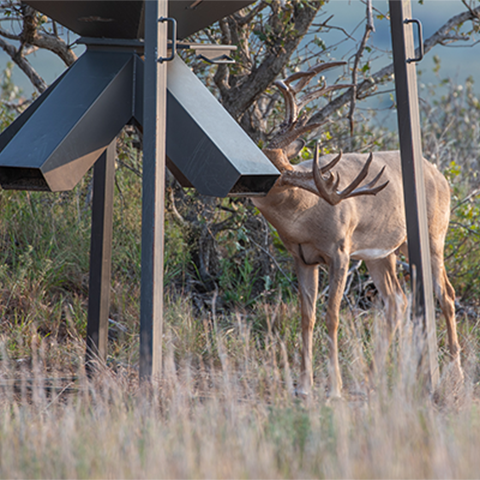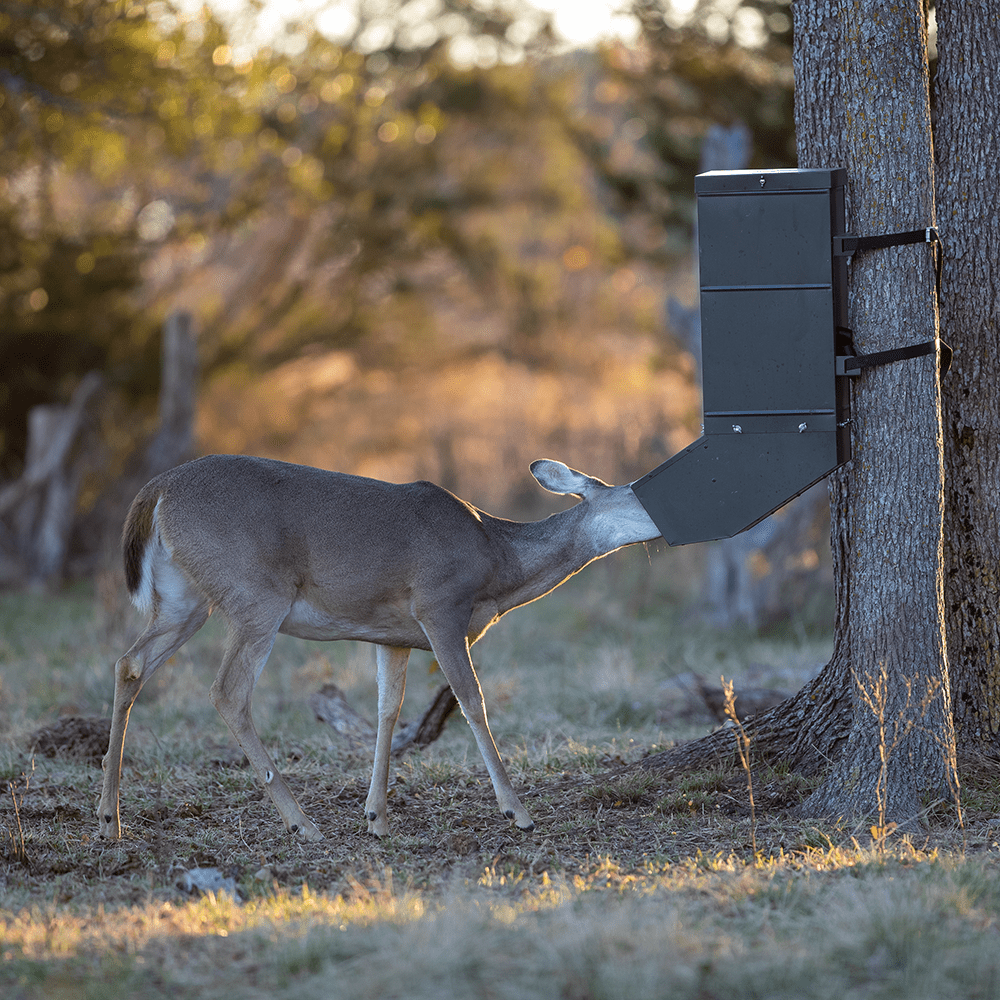Improve Your Deer Management Plan with FeedThatGame.com Proven Feeding Formulas
Wiki Article
The Duty of Deer Feeders in Wildlife Monitoring and Environment Conservation
Are you interested in wildlife monitoring and habitat conservation? Discover the important role of deer feeders in achieving these goals. By boosting deer nutrition and managing populaces, feeders help decrease conflicts between deer and humans. They contribute to promoting well balanced ecological communities and boosting habitat high quality. In this write-up, we will discover the many benefits of deer feeders and their significance in wild animals management and preservation initiatives. So, let's dive in and find out more concerning these important tools.Enhancing Deer Nourishment and Wellness

Among the main advantages of using a deer feeder is that it allows you to manage the kind and quality of feed that deer consume. By making use of particularly formulated deer feed, you can supply important nutrients that may be lacking in their all-natural diet. This is especially crucial during times of limited forage accessibility, such as the winter months or during periods of drought.
Moreover, deer feeders can aid improve the general health and wellness of the deer population by lowering competitors for food. When food resources end up being scarce, deer may become more territorial and hostile, bring about fights and injuries. By supplying a regular food source through a deer feeder, you can assist relieve this competitors and promote a more harmonious feeding atmosphere.
Along with enhancing nutrition, deer feeders can additionally be made use of as a management tool to bring in deer to particular areas for monitoring or searching objectives. By tactically placing feeders in desired areas, you can develop opportunities for wild animals enthusiasts and seekers to observe and engage with deer in a controlled and sustainable manner.

Managing Deer Populations
To successfully take care of deer populations, it is vital to carry out strategies that prioritize sustainable population control and environment preservation. One key element of taking care of deer populations is through using controlled hunting. By carefully managing the number of deer collected annually, wild animals supervisors can avoid overpopulation and keep the deer populace at a sustainable and healthy and balanced degree. This helps to reduce the adverse influences of deer on their habitat, such as overgrazing and damages to plant life.An additional important approach in handling deer populations is the development and upkeep of ideal habitats. By boosting the high quality of the environment, deer populations can much better sustain themselves and prevent becoming reliant on additional feeding.

Reducing Human-Deer Disputes
To minimize conflicts in between human beings and deer, it is essential to execute effective techniques that deal with the factors adding to these disputes (feedthatgame.com). One essential aspect is habitat devastation, as urbanization and advancement encroach upon all-natural deer habitats. By preserving and producing green rooms, such as parks and wild animals hallways, we can supply alternate habitats for deer and lower their interaction with human beingsOne more variable to take into consideration is the schedule of food sources. Deer are brought in to suburbs when they find conveniently obtainable food, such as gardens and decorative plants. To look at here now minimize this, it is vital to educate home owners concerning deer-resistant landscaping options and to advertise making use of fencing or various other deterrents to shield yards.
Furthermore, managing deer populations via responsible searching practices can assist reduce conflicts. By carrying out hunting periods and bag restrictions, we can keep a well balanced deer population, which decreases competition for sources and lowers the likelihood of deer intruding on human areas.
In addition, public understanding projects can play a considerable duty in reducing problems. These campaigns can enlighten the general public regarding the significance of keeping a safe distance from deer, preventing feeding them, and properly disposing of waste to avoid attracting them. By advertising liable behaviors, we can reduce unfavorable interactions between deer and people.
Promoting Balanced Ecosystems
Advertise a well balanced ecosystem by motivating all-natural lowering and foraging behaviors dependence on deer feeders. While deer feeders might seem like a practical method to draw in and sustain deer populations, they can disrupt the fragile balance of an ecological community. By relying exclusively on deer feeders, deer may end up being depending on the very easy food resource, leading to overpopulation and negative impacts on vegetation and various other wild animals.Motivating all-natural foraging behaviors is necessary for keeping a healthy and balanced ecological community. Enabling deer to forage for their food aids them you could check here establish important skills, such as recognizing and choosing nutritious plants. It also prevents overgrazing in details areas, ensuring an extra even distribution of sources and lowering the threat of environment degradation.
Reducing dependence on deer feeders can likewise benefit various other wildlife varieties. When deer gather at feeders, it can develop a synthetic focus of pets, which may lead to increased competition for resources and higher transmission rates of diseases. By advertising all-natural foraging, deer will distribute throughout their environment, reducing the danger of condition transmission and sustaining a much more diverse and balanced ecosystem.
In enhancement to decreasing dependence on deer feeders, it is important to concentrate on environment preservation and repair. By enhancing natural environments, we can give a larger variety of food sources for deer and other wildlife. This includes growing indigenous vegetation, developing food stories, and protecting all-natural corridors for motion.
Improving Environment Quality and Preservation Initiatives
Indigenous plants supply food and sanctuary for a variety of pets, consisting of deer. These water includes offer as necessary alcohol consumption and showering spots for deer and various other wild animals. By carrying out these repair and conservation methods, you play a vital function in enhancing environment quality and preservation efforts for deer and various other wild animals.Conclusion
In verdict, deer feeders play an essential function in wild animals management and environment conservation. By supplying improved nourishment and promoting deer wellness, they add to the general health of the deer population.By improving deer nutrition and handling populations, feeders aid reduce disputes in between deer and people.To improve deer nutrition and wellness, you can supplement their all-natural forage with a deer feeder.Moreover, deer feeders can help enhance the overall health and wellness of the deer populace by minimizing competition for food. While deer feeders may seem like a hassle-free means to bring in and maintain deer populaces, they can disrupt the delicate equilibrium of a community. By relying only on deer feeders, deer might become reliant on the easy food source, leading to overpopulation and negative effects on plants and other wildlife.
Report this wiki page